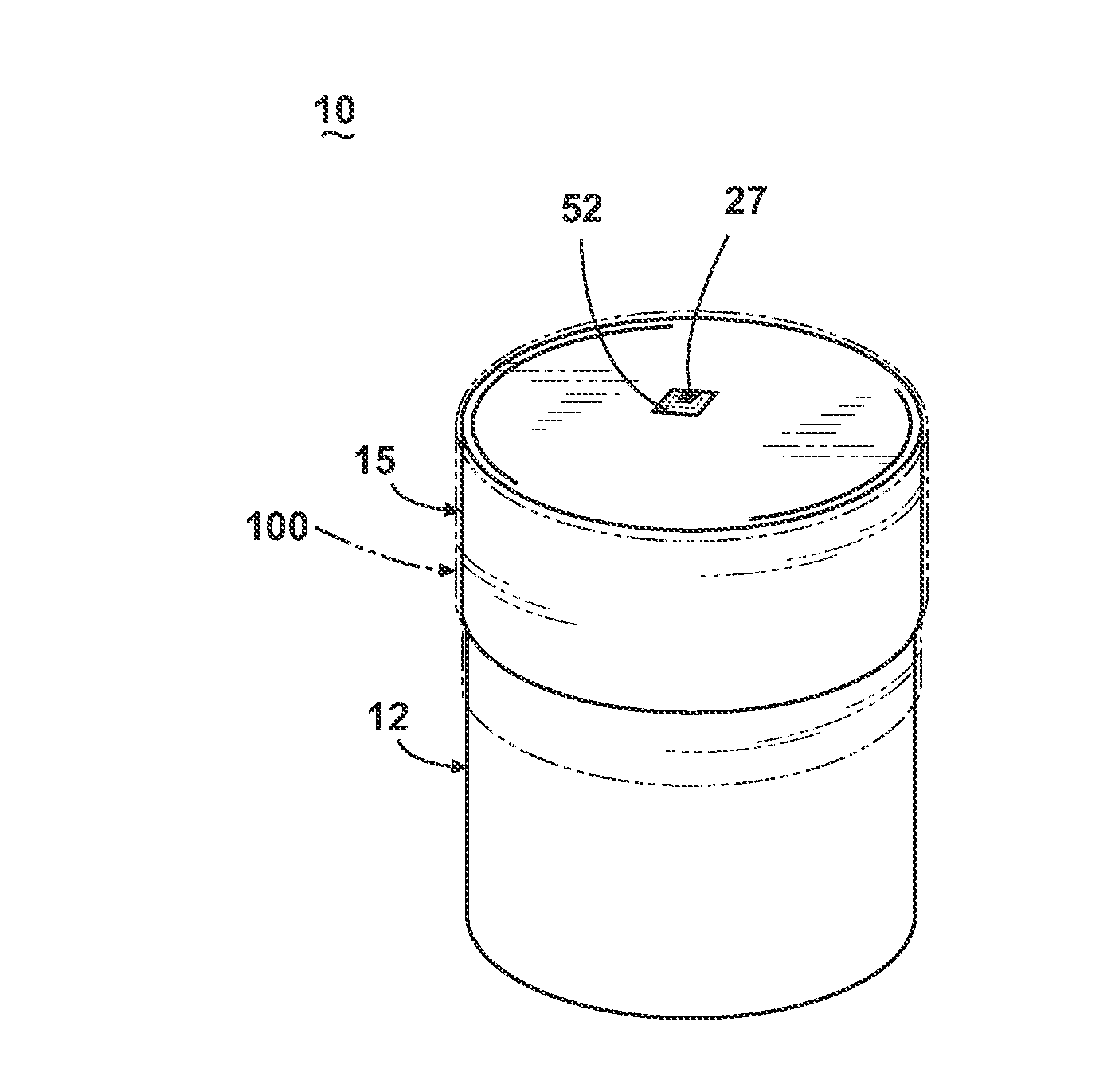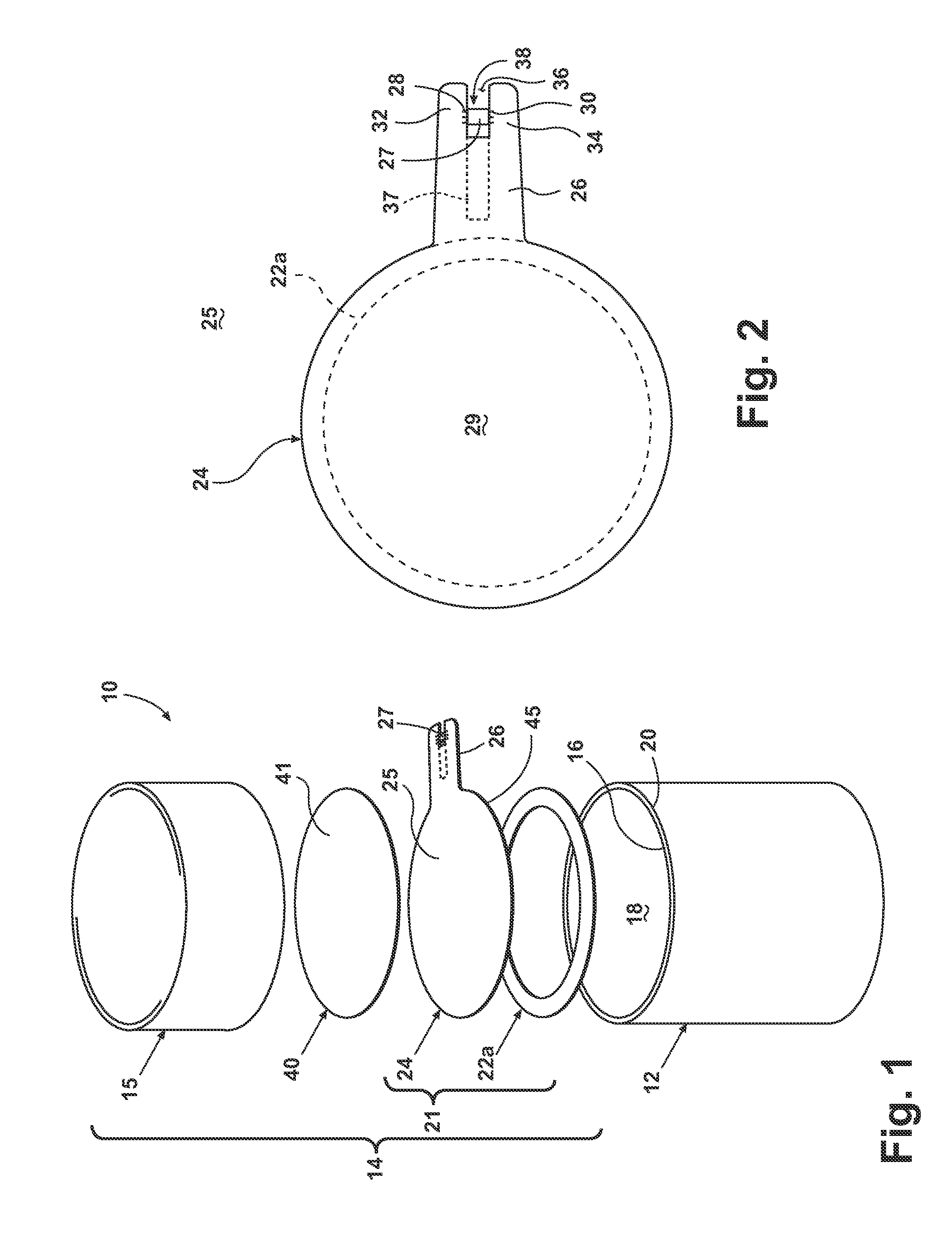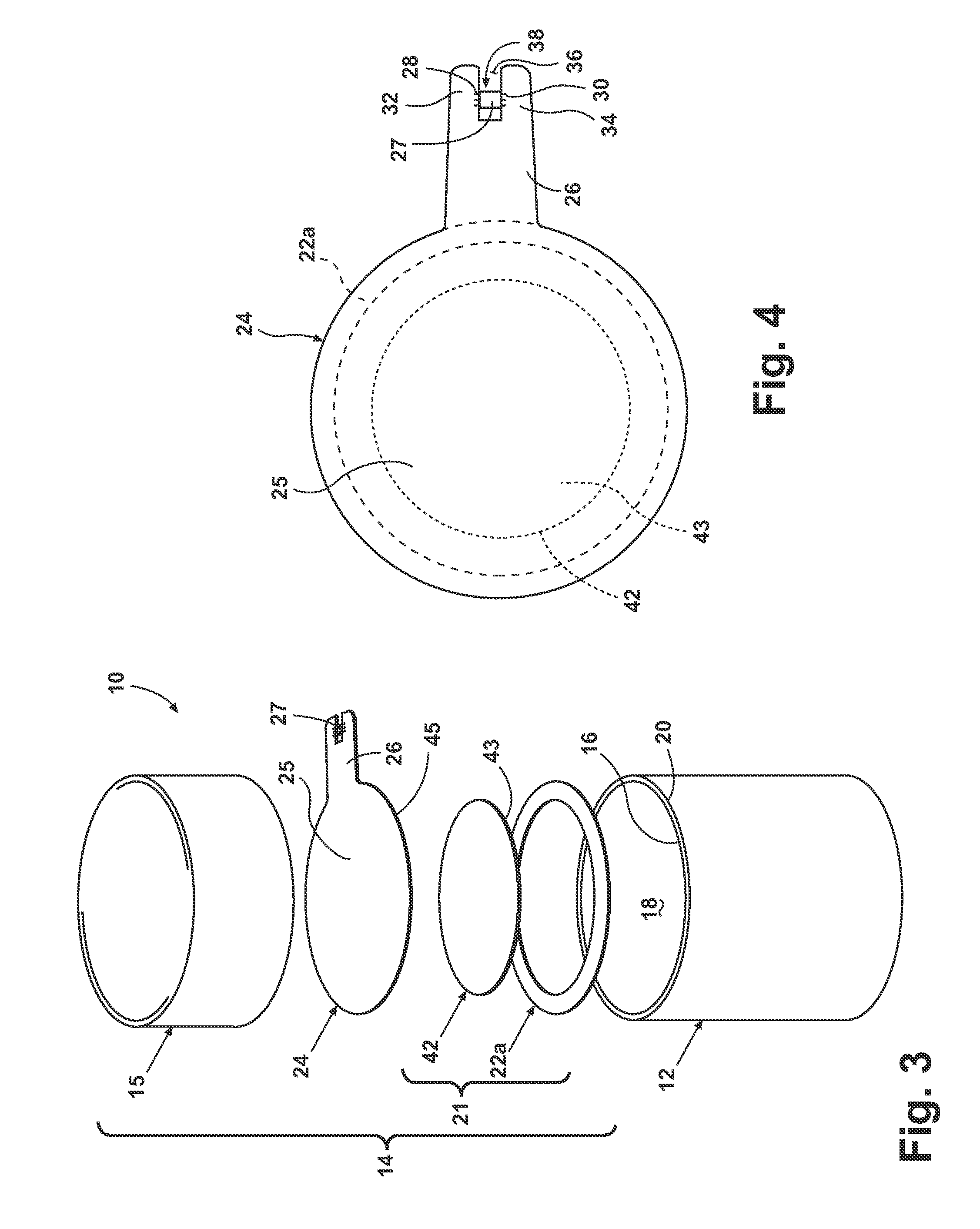Container seal with radio frequency identification tag, and method of making same
a technology of radio frequency identification and container seal, which is applied in the direction of sealing, caps, instruments, etc., can solve the problems of tampering, impede the migration of air and moisture into the interior of the container, and add to the cost ultimately borne by the end-user
- Summary
- Abstract
- Description
- Claims
- Application Information
AI Technical Summary
Benefits of technology
Problems solved by technology
Method used
Image
Examples
first embodiment
[0073]The configuration of the mounting tab 26 may be as disclosed for the first embodiment RFID tag 25. The metallic foil 24 and mounting tab 26 may perform as an antenna for the microprocessor 27, which may be isolated from the metallic foil 24 by the fold-under isolation liner 42, except through the mounting contacts 28, 30.
[0074]FIGS. 5 and 6 illustrate a third exemplary embodiment of a closure assembly 14, including an RFID tag 25, generally as described for the first exemplary embodiment, and a fold-under isolation pad 44. The fold-under isolation pad 44 is illustrated as comprising a rectilinear “patch” affixed to the underside 45 of the metallic foil 24, and may be utilized in place of the fold-under isolation liner 42. The fold-under isolation pad 44 may have a size and configuration sufficient to isolate the microprocessor 27 from the metallic foil 24 when the mounting tab 26 may be folded under. Optionally, the isolation pad 44 may be affixed to the upper side of the meta...
sixth embodiment
[0080]Referring now to FIG. 9, a sixth exemplary embodiment of a closure assembly 14 according to the invention is illustrated. The sixth embodiment is similar to the previously described embodiments, and includes the container 12, the closure 15, a sealable film 22b (the illustrated sealable films 22a, 22b may be utilized in the alternative), the metallic foil 24, a pull-tab liner 76, and a backing liner 78, also referred to as a “wad.” The closure assembly 14 may include different elements than shown in FIG. 9 depending upon, for example, factors such as the pertinent properties of the item(s) to be contained, and the type (e.g. moisture, tampering) and degree of protection specified.
[0081]The pull-tab liner 76 may comprise a multi-layered liner incorporating a pull-tab 82 for grasping by a user to remove the closure assembly 14 and gain access to the interior space 18 of the container 12. The pull-tab liner 76 may be interlayered with the sealable film 22 and the metallic foil 24...
PUM
 Login to View More
Login to View More Abstract
Description
Claims
Application Information
 Login to View More
Login to View More - R&D
- Intellectual Property
- Life Sciences
- Materials
- Tech Scout
- Unparalleled Data Quality
- Higher Quality Content
- 60% Fewer Hallucinations
Browse by: Latest US Patents, China's latest patents, Technical Efficacy Thesaurus, Application Domain, Technology Topic, Popular Technical Reports.
© 2025 PatSnap. All rights reserved.Legal|Privacy policy|Modern Slavery Act Transparency Statement|Sitemap|About US| Contact US: help@patsnap.com



